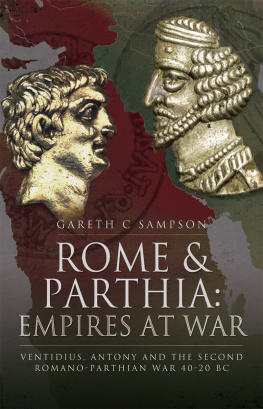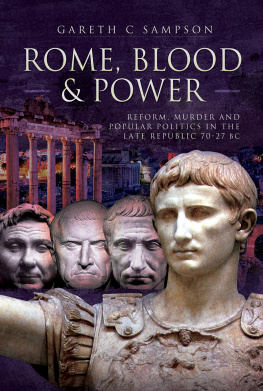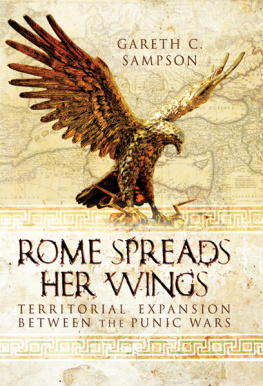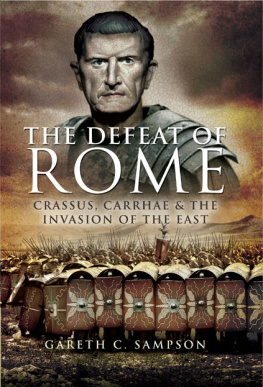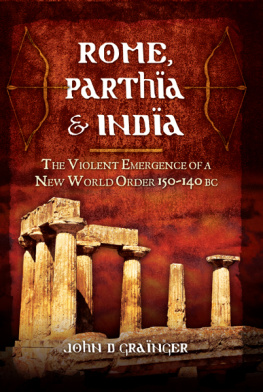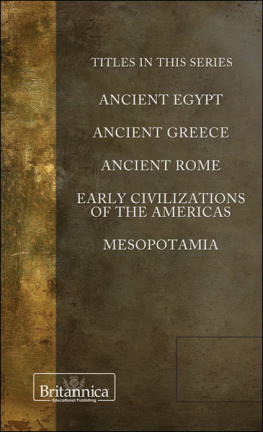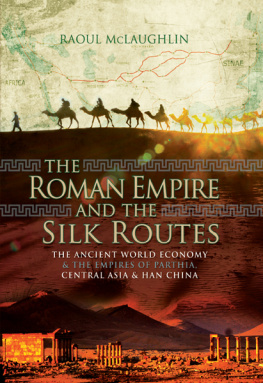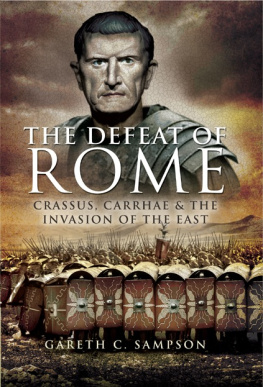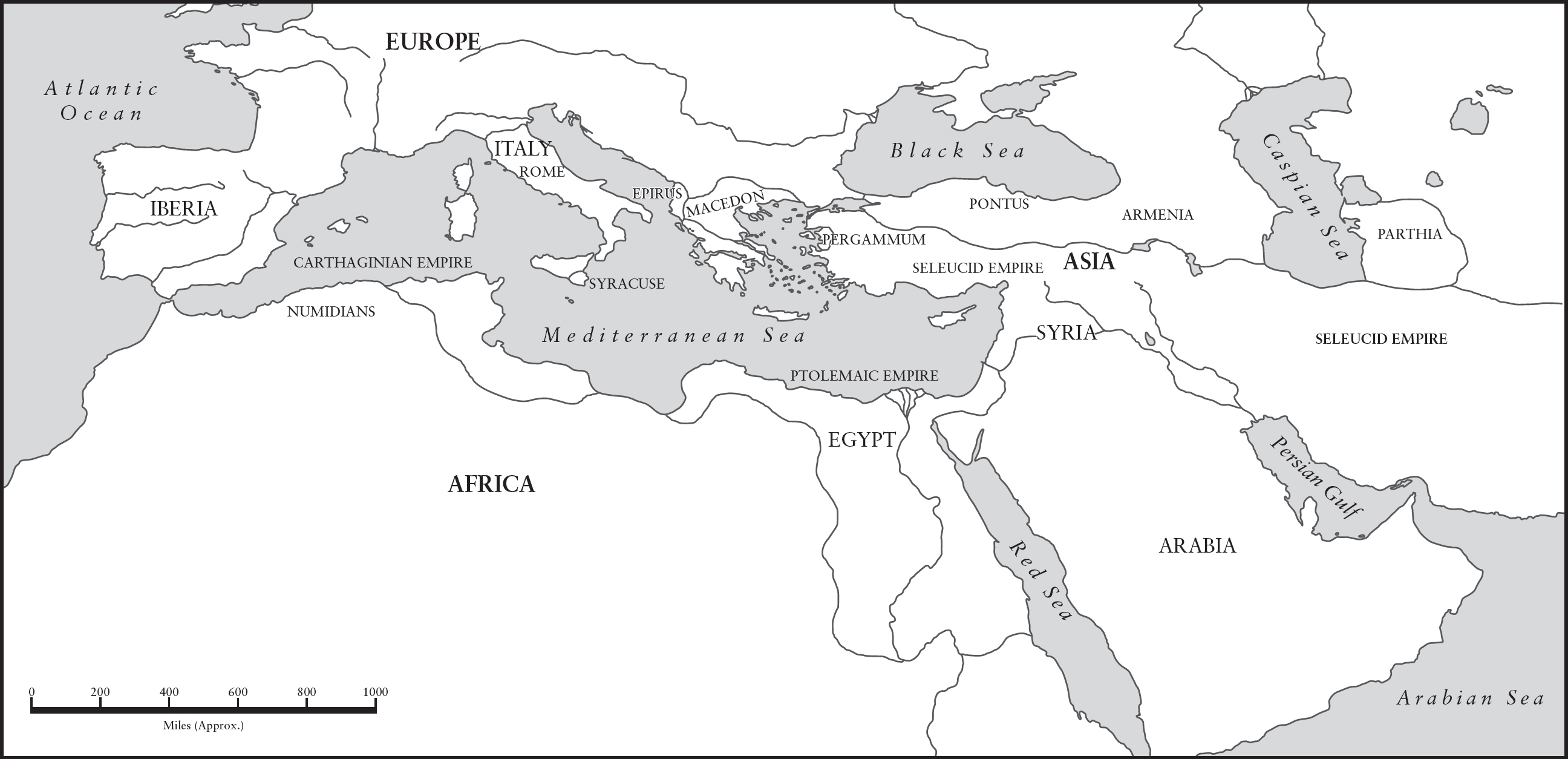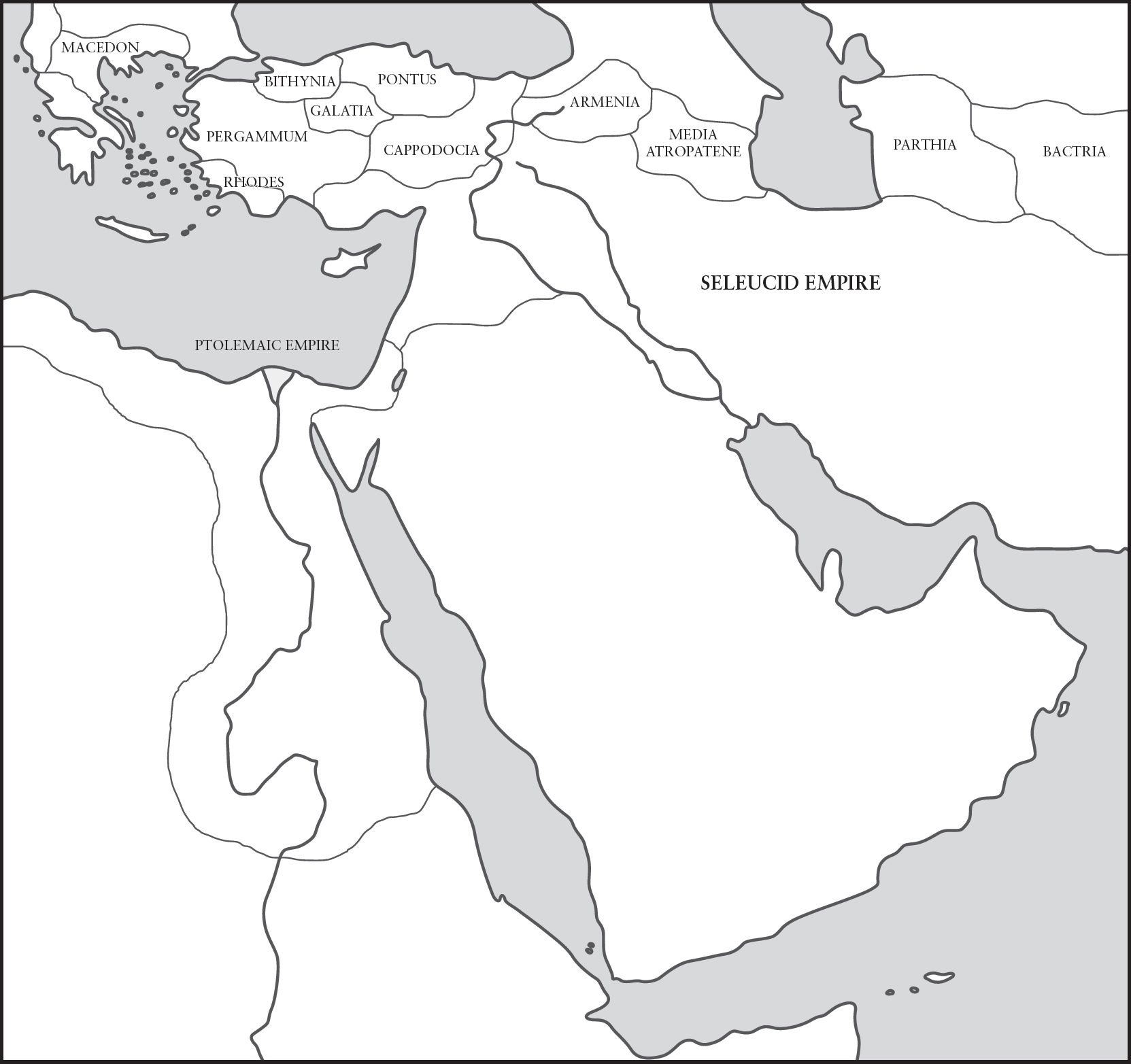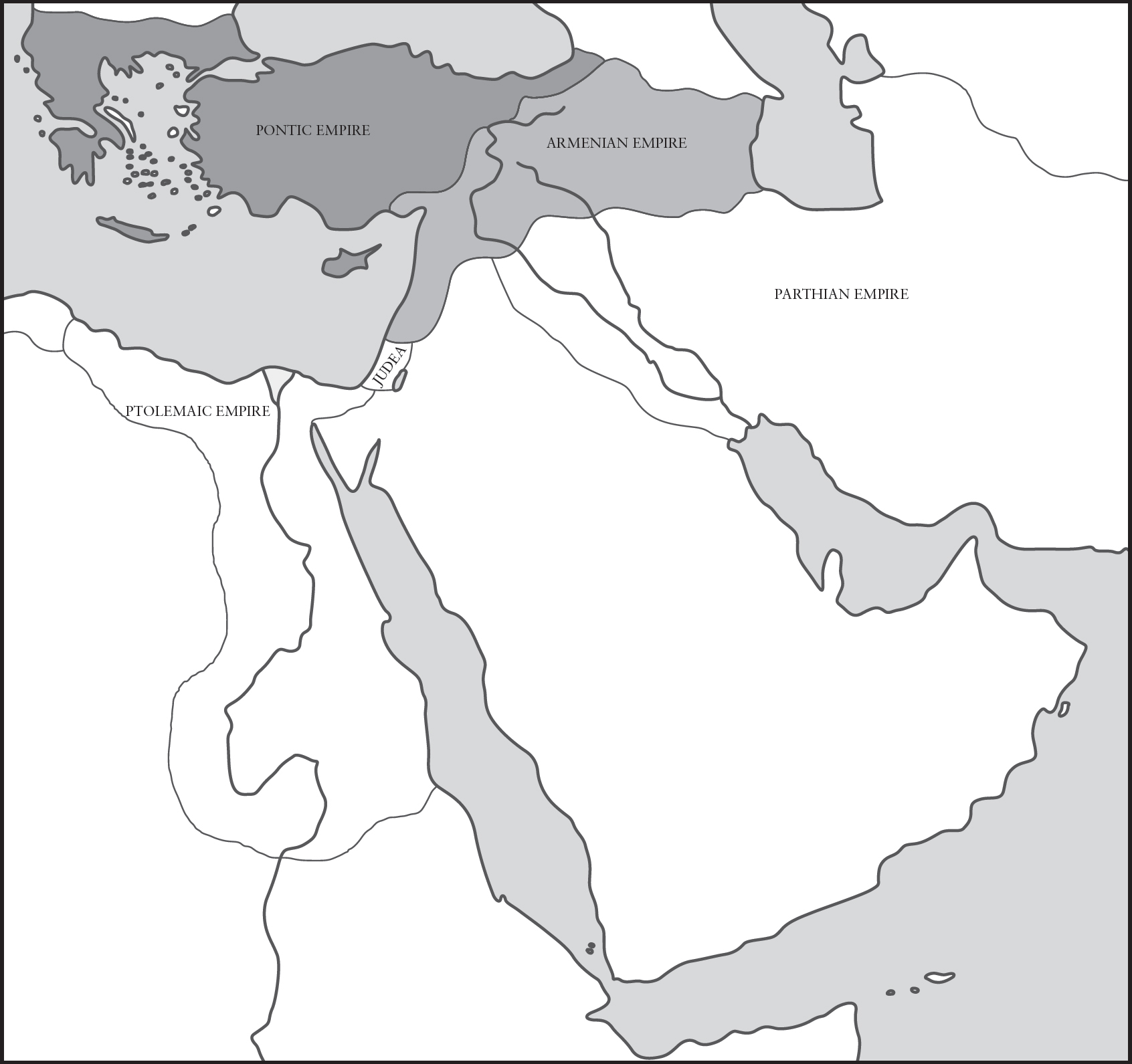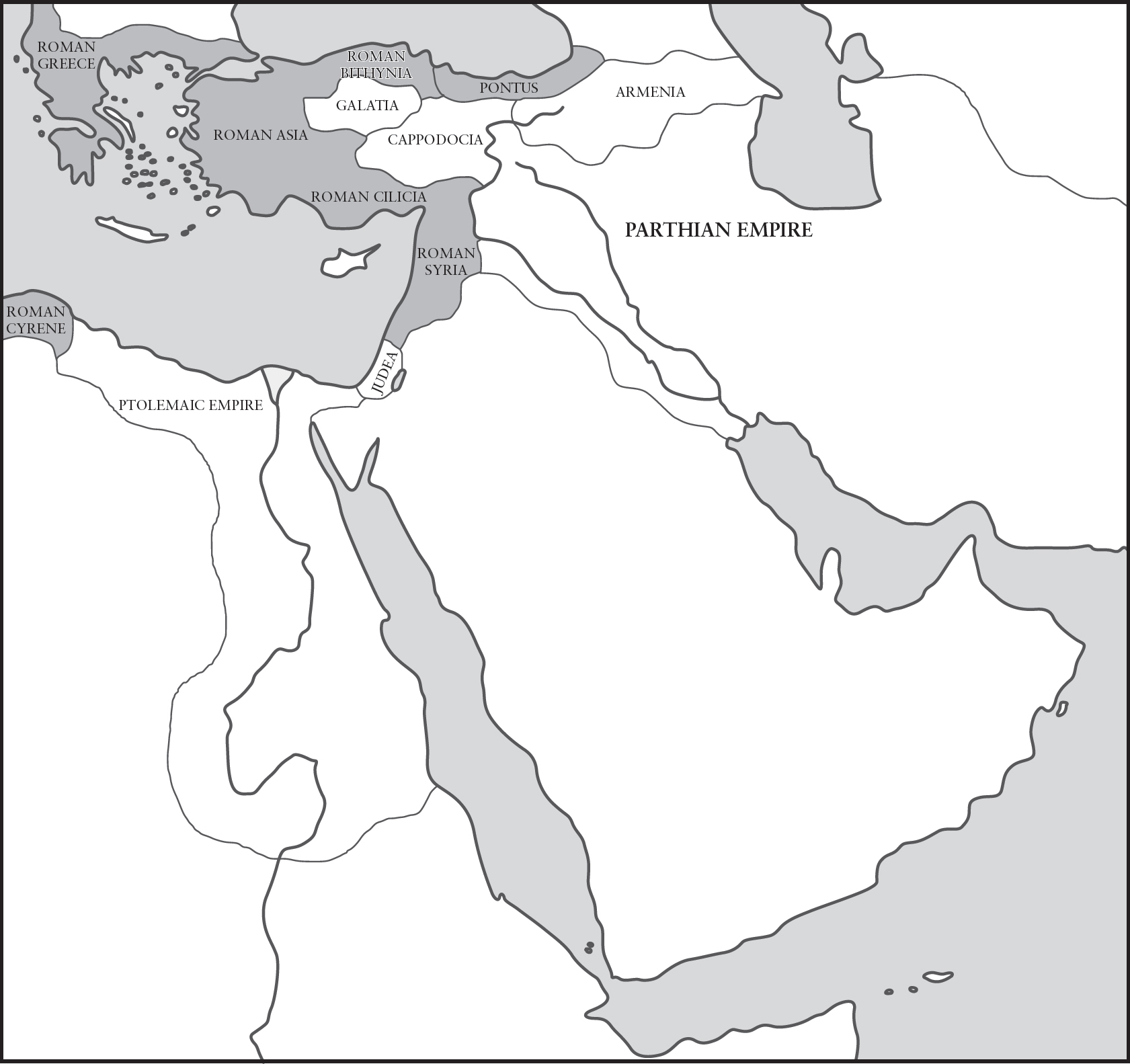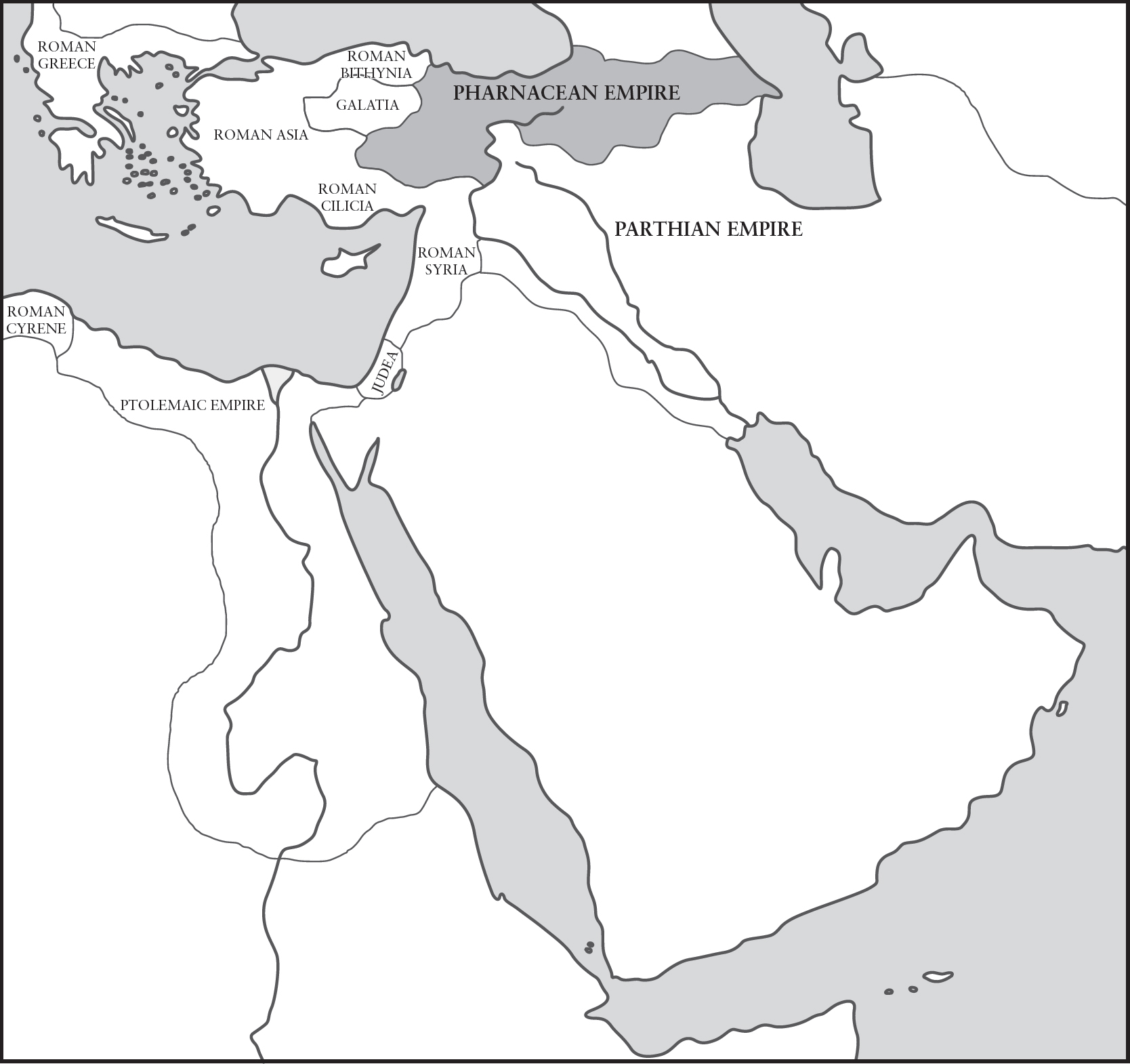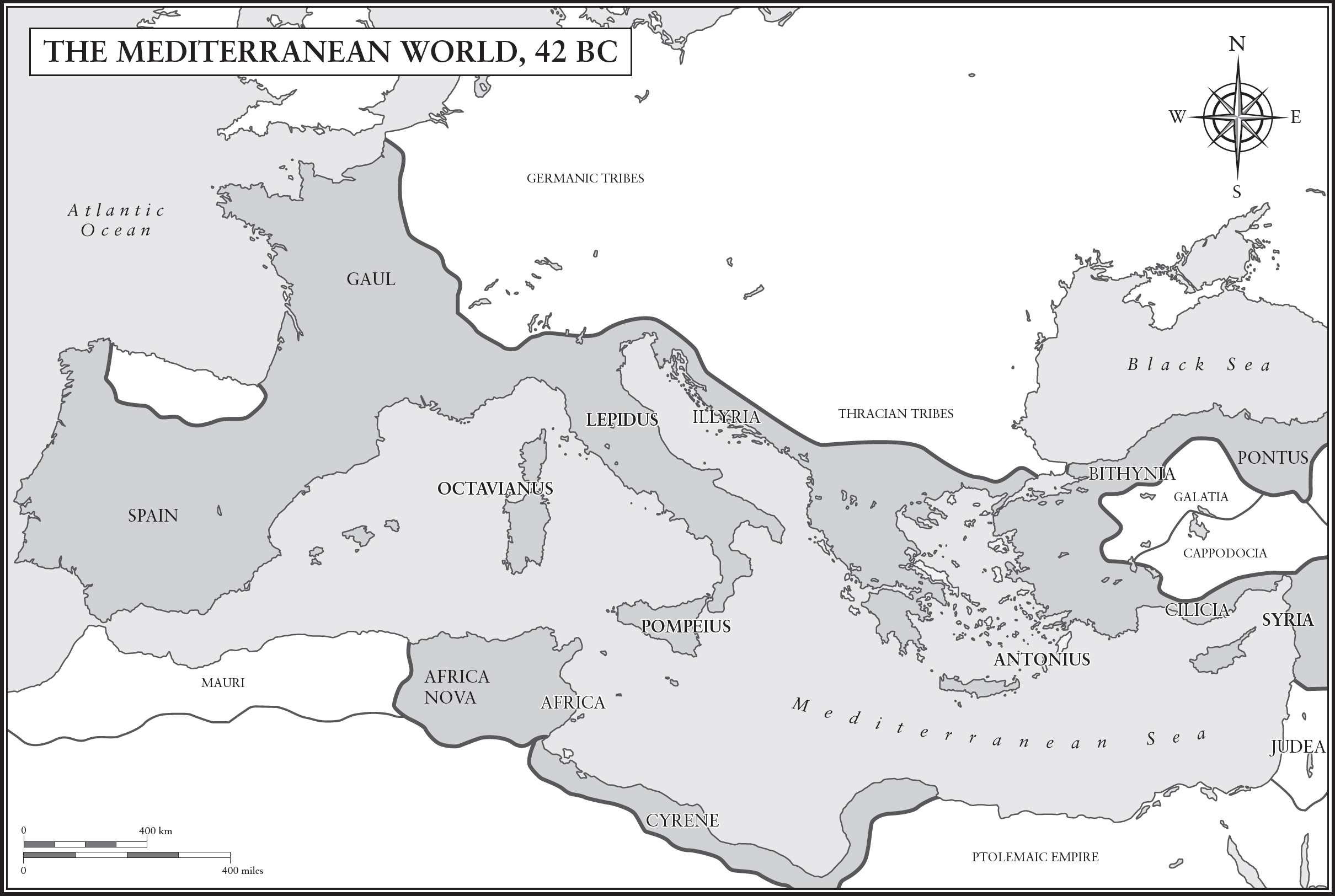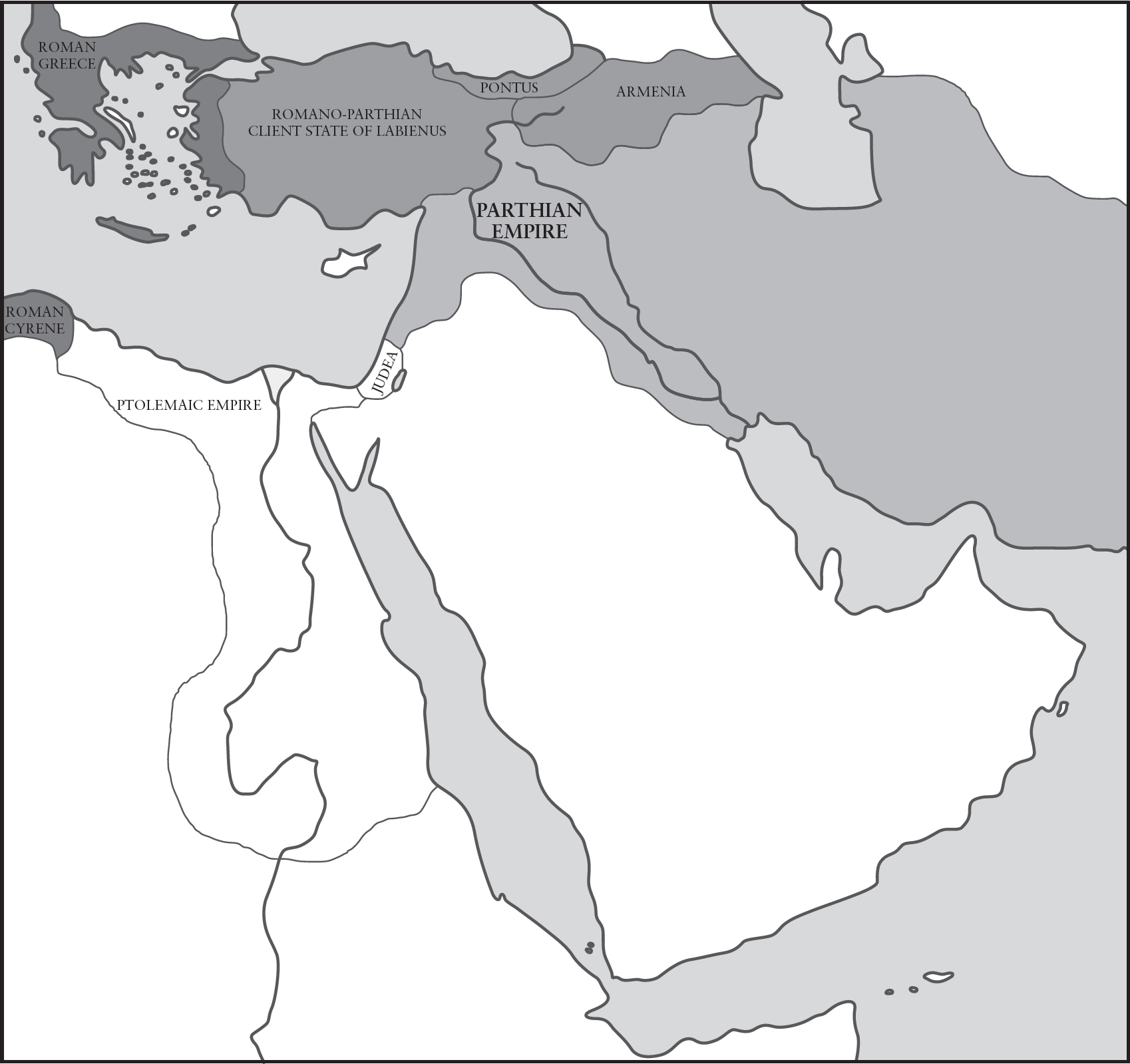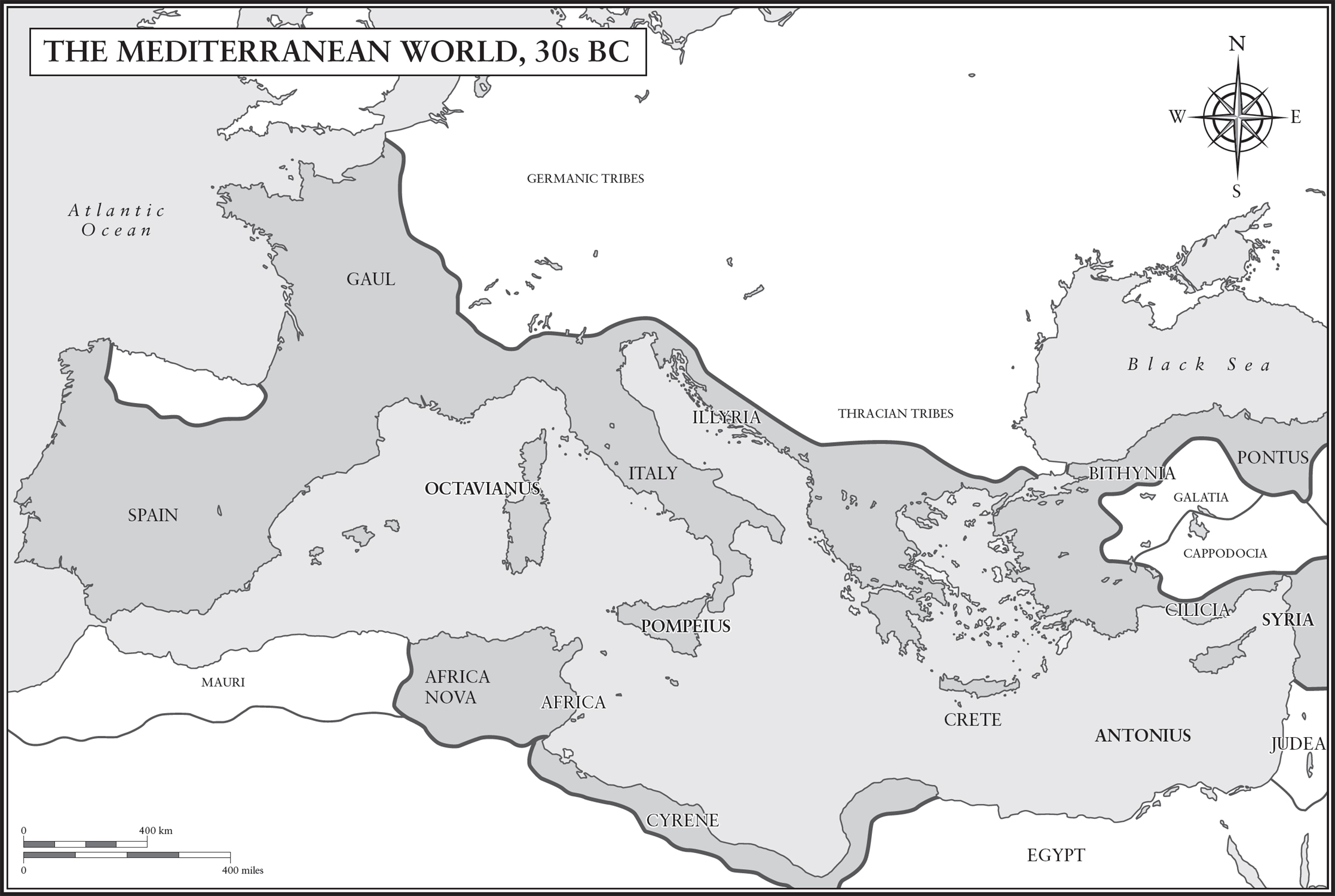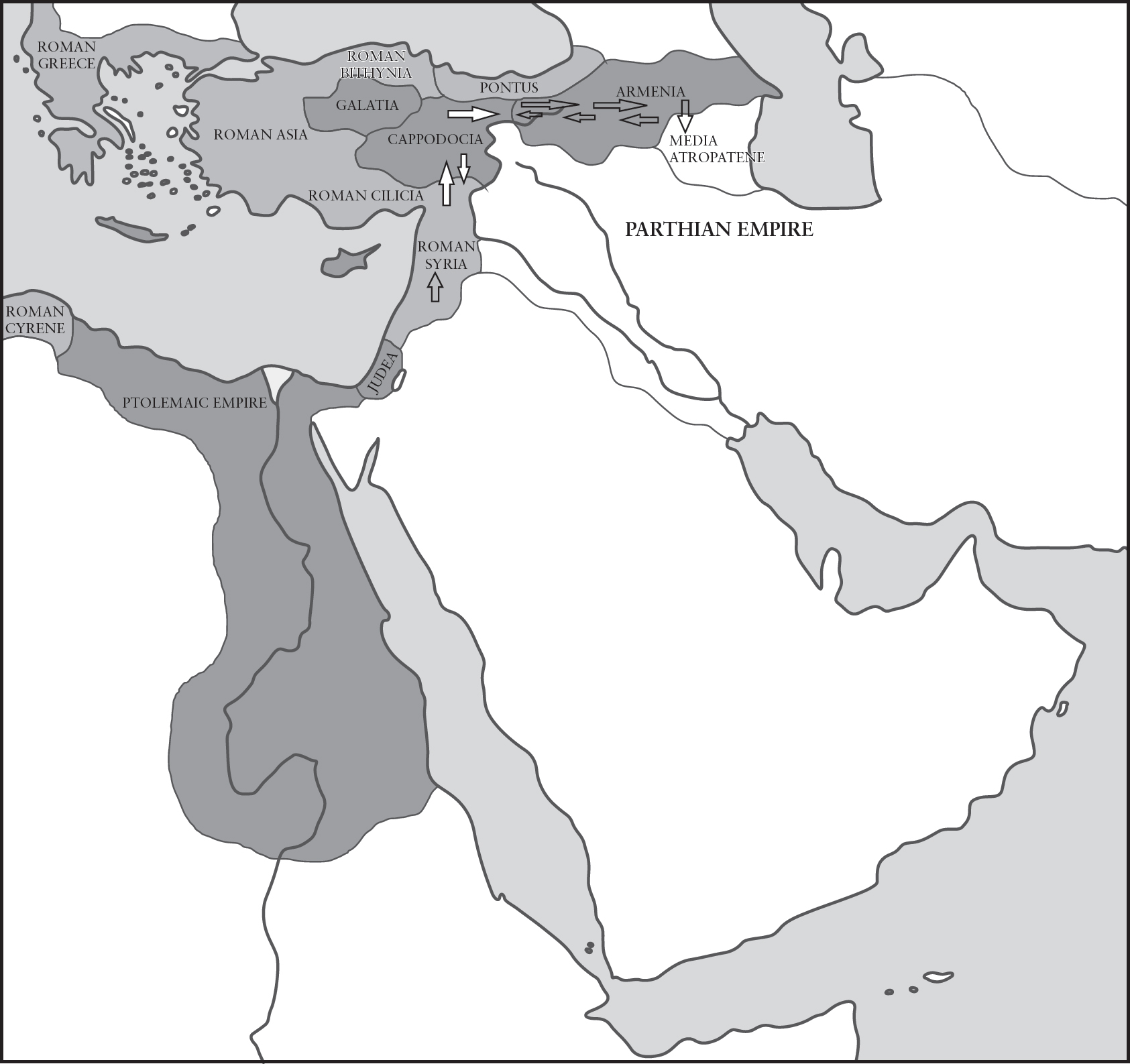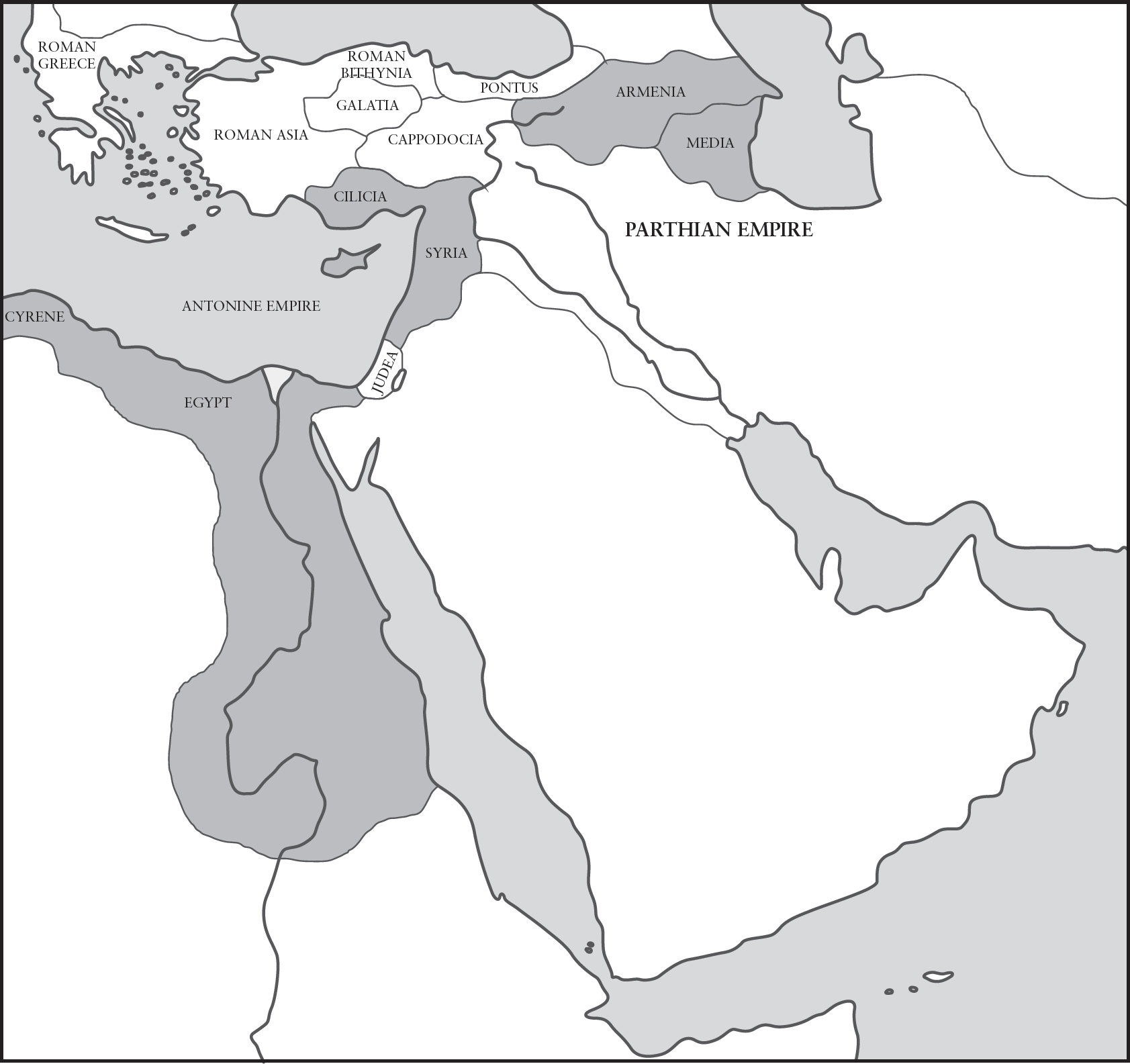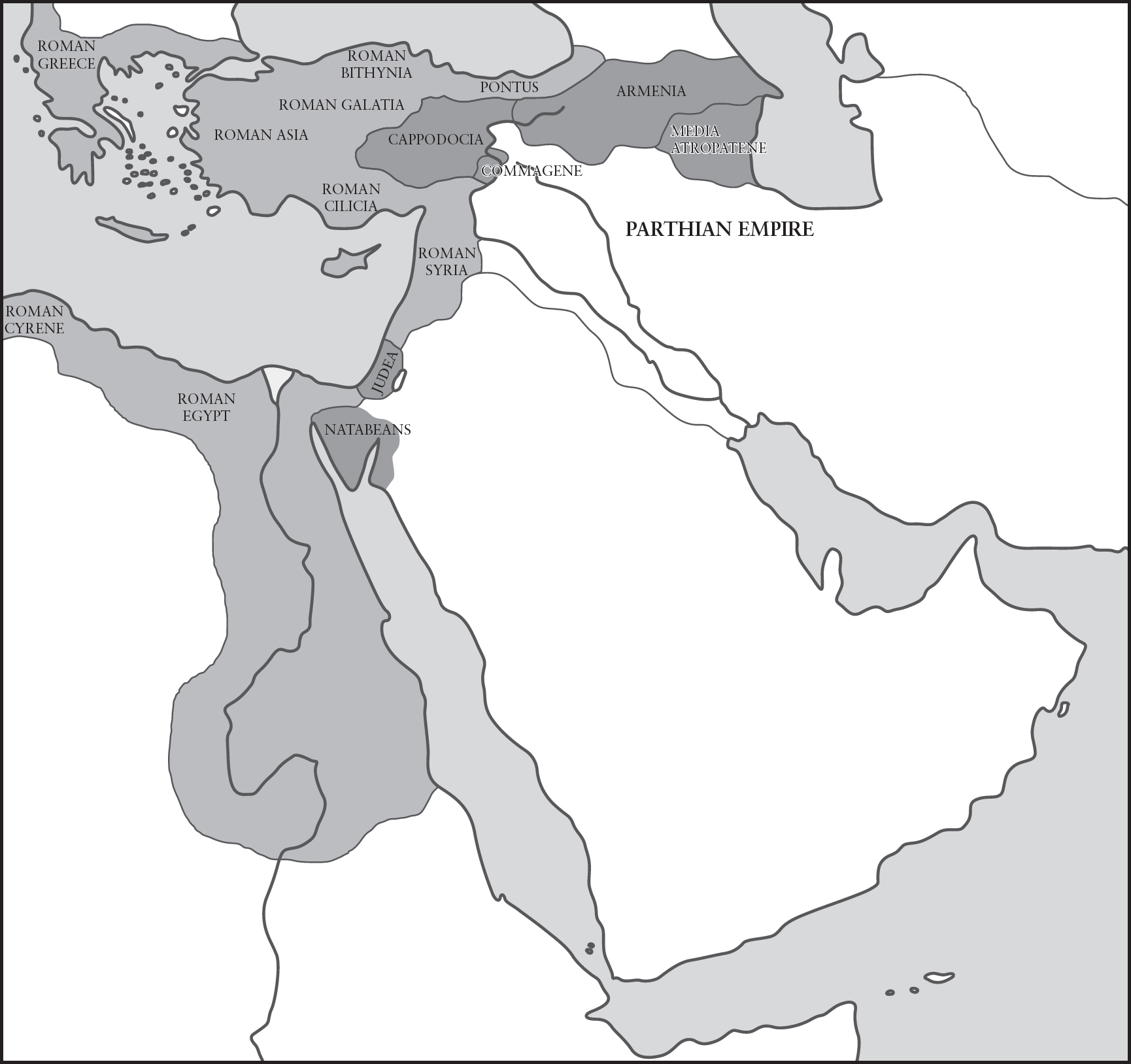Pagebreaks of the print version
Rome and Parthia: Empires at War
Dedication
In loving memory of Geoff Sampson (19472019)
Rome and Parthia: Empires at War
Ventidius, Antony and the Second Romano-Parthian War, 4020 BC
Gareth C Sampson
First published in Great Britain in 2020 by
Pen & Sword Military
An imprint of
Pen & Sword Books Ltd
Yorkshire Philadelphia
Copyright Gareth C Sampson 2020
ISBN 978 1 52671 013 0
eISBN 978 1 52671 015 4
Mobi ISBN 978 1 52671 014 7
The right of Gareth C Sampson to be identified as Author of this work has been asserted by him in accordance with the Copyright, Designs and Patents Act 1988.
A CIP catalogue record for this book is available from the British Library.
All rights reserved. No part of this book may be reproduced or transmitted in any form or by any means, electronic or mechanical including photocopying, recording or by any information storage and retrieval system, without permission from the Publisher in writing.
Pen & Sword Books Limited incorporates the imprints of Atlas, Archaeology, Aviation, Discovery, Family History, Fiction, History, Maritime, Military, Military Classics, Politics, Select, Transport, True Crime, Air World, Frontline Publishing, Leo Cooper, Remember When, Seaforth Publishing, The Praetorian Press, Wharncliffe Local History, Wharncliffe Transport, Wharncliffe True Crime and White Owl.
For a complete list of Pen & Sword titles please contact
PEN & SWORD BOOKS LIMITED
47 Church Street, Barnsley, South Yorkshire, S70 2AS, England
E-mail:
Website: www.pen-and-sword.co.uk
Or
PEN AND SWORD BOOKS
1950 Lawrence Rd, Havertown, PA 19083, USA
E-mail:
Website: www.penandswordbooks.com
Acknowledgements
T he first and greatest acknowledgement must go out to my wonderful wife Alex, without whose support none of this would be possible.
Special thanks go out to my parents, who always encouraged a love of books and learning (even if they did regret the house being filled with books).
There are a number of individuals who through the years have inspired in me the love of Roman history and mentored me along the way: Michael Gracey at William Hulme, David Shotter at Lancaster and Tim Cornell at Manchester. My heartfelt thanks go out to them all.
A shout goes out to the remaining members of the Manchester diaspora: Gary, Ian, Jason and Sam. Those were good days.
As always, my thanks go out to my editor, Phil Sidnell, for his patience and understanding.
It must also be said that as an independent academic, the job of researching these works is being made easier by the internet, so Alumnus access to JSTOR (Manchester and Lancaster) and Academia.edu must get a round of thanks also.
List of Illustrations
Bust of Cn. Pompeius Magnus
Bust of C. Iulius Caesar
Bust of M. Antonius
Bust of M. Vipsanius Agrippa
Prima Porta statue of Augustus
Coin of Orodes II
Coin of Pacorus
Coin of Antonius
Coin of Labienus
Coin of Antonius and Cleopatra
Coin of Artavasdes I of Media
Coin of Artavasdes II of Armenia
Coin of Augustus depicting the Parthian surrender of Roman standards
Coin of Augustus depicting the Parthian Triumphal arch
Maps & Diagrams
Map 1: Ancient World in the Third Century
Map 2: Near East Post Treaty of Apamea (188 BC )
Map 3: Near East Pontic & Armenian Empires (9174 BC )
Map 4: Near East End of Romes Eastern War (63 BC )
Map 5: Near East Pharancean Empire (47 BC )
Map 6: Ancient World Roman Civil War (42 BC )
Map 7: Near East Romano-Parthian Conquests (40 BC )
Map 8: Ancient World Roman Civil War (39 BC )
Map 9: Antonius Invasion & Retreat (36 BC )
Map 10: Antonine Empire (34 BC )
Map 11: Near East End of the Romano-Parthian War (20 BC )
Map 1: Ancient World in the Third Century.
Map 2: Near East Post Treaty of Apamea (188 BC ).
Map 3: Near East Pontic & Armenian Empires (9174 BC ).
Map 4: Near East End of Romes Eastern War (63 BC ).
Map 5: Near East Pharancean Empire (47 BC ).
Map 6: Ancient World Roman Civil War (42 BC ).
Map 7: Near East Romano-Parthian Conquests (40 BC ).
Map 8: Ancient World Roman Civil War (39 BC
Map 9: Antonius Invasion & Retreat (36 BC ).
Map 10: Antonine Empire (34 BC ).
Map 11: Near East End of the Romano-Parthian War (20 BC ).
Introduction: Empires at War, with Each Other and Themselves
F or over 600 years, the Middle East was defined by the division between the two superpowers of the ancient world: Rome and Parthia/Persia. Yet this division between two empires and two cultures, with either the Euphrates or the Tigris acting as the dividing line, was not inevitable and in fact flew in the face of the previous 500 years of history. Since the rise of the First Persian Empire under Cyrus the Great in the mid-sixth century BC , the Middle East was united, acting as the core of a universal empire, whose ruler claimed the title of King of Kings. This concept survived the Persians and was adapted by Alexander the Great, who overthrew the Persian Empire and replaced it with one which unified Western and Eastern cultures, mixing Greek (Macedonian) with eastern customs (something the Persians had been trying by force for several centuries). Ever so briefly, one empire spanned from the Adriatic to the Indus. Yet even though Alexanders universal empire died with him, the dream did not, and the Hellenistic empires (Macedon, Seleucid and Ptolemaic) which rose from the ashes kept the dream alive between them.

